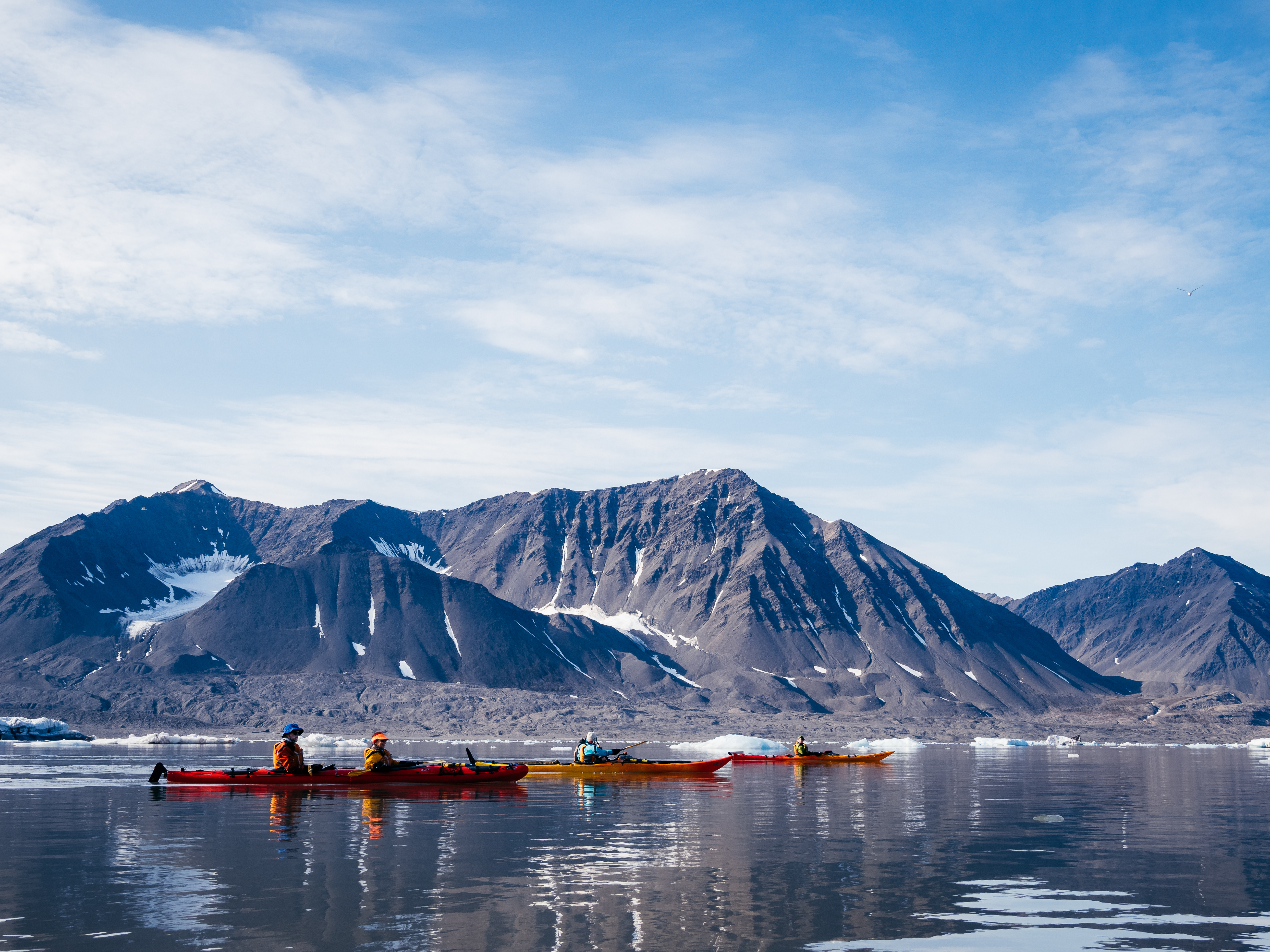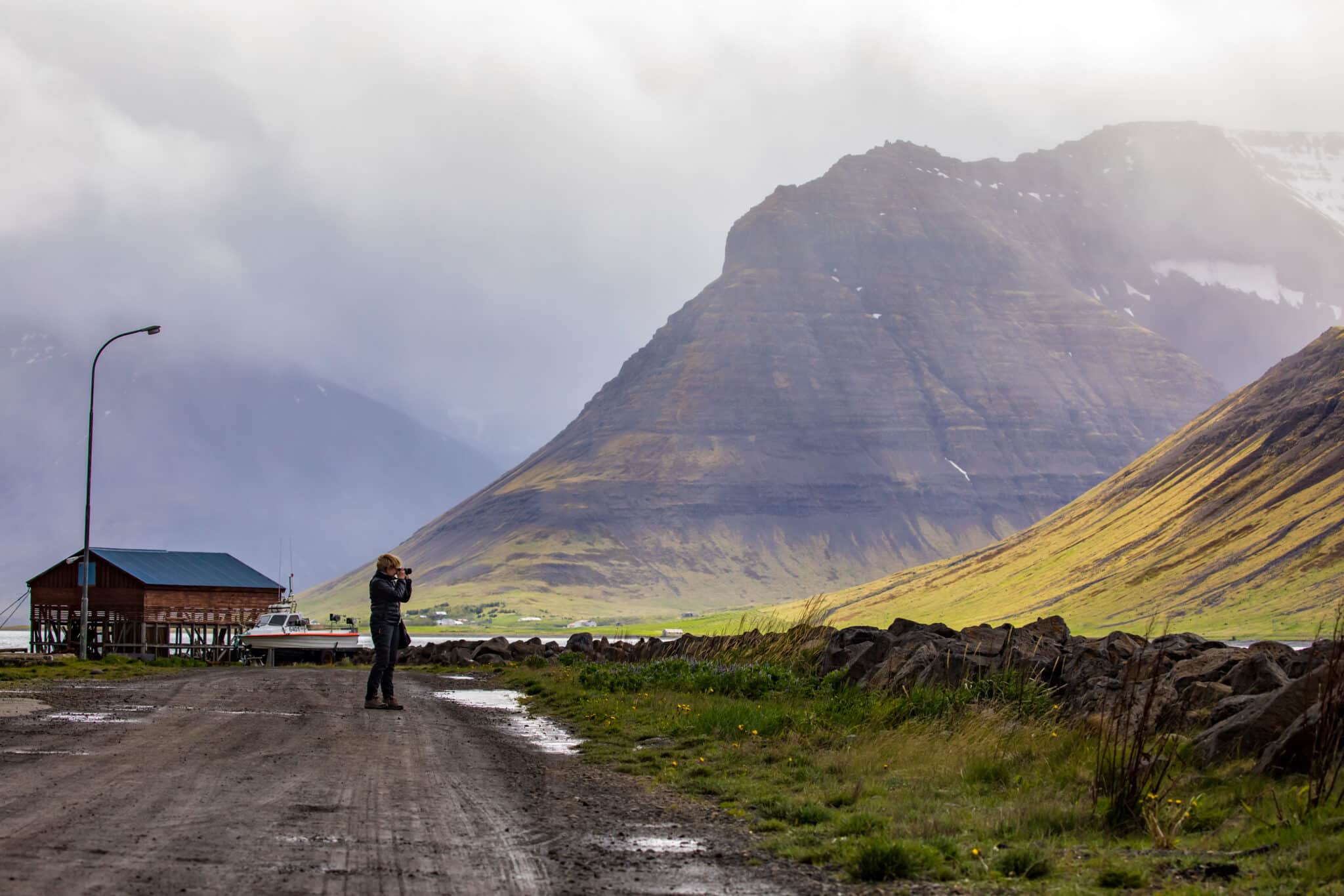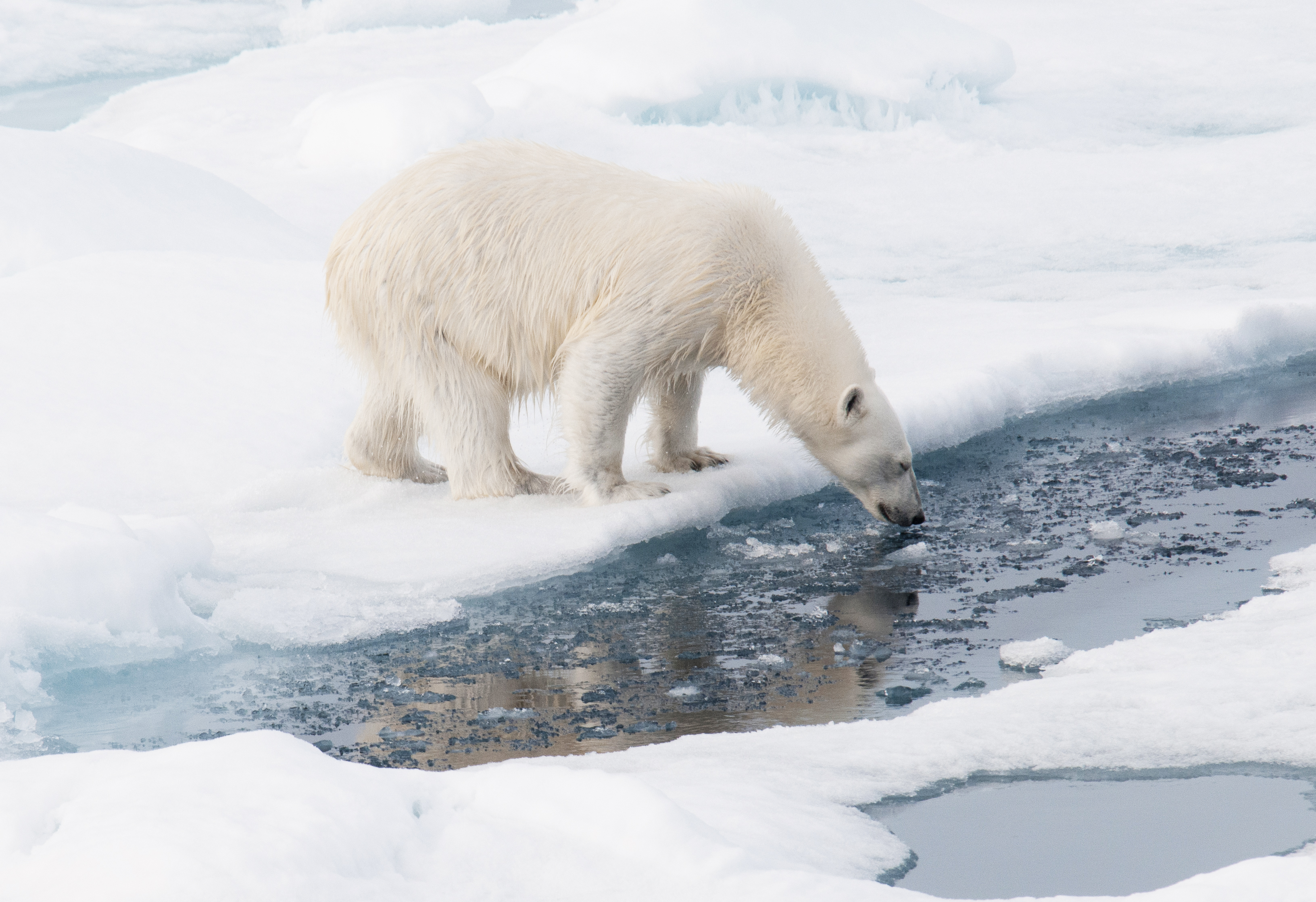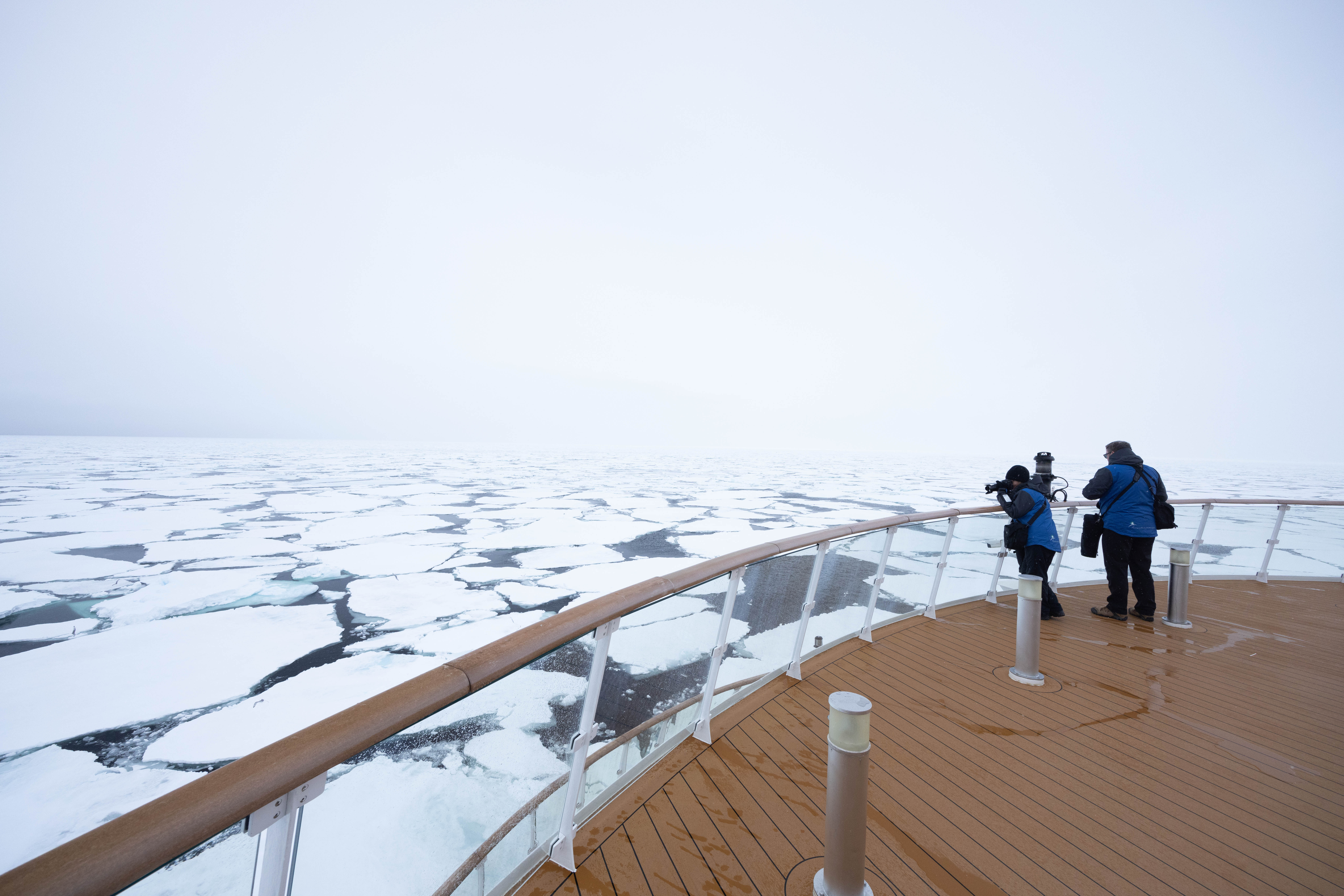Travelling to the Arctic has no doubt been on your travel wish list for some time – there are so many cool things to do there – literally! You know you want to go, but do you know the best time to visit the Arctic Circle? Whether it’s a journey to the pristine wilderness of Svalbard, a deep dive into the wonders of Greenland, or a circuit of the best of Iceland, there is an optimal time to travel to best meet your travel goals.
Is witnessing some of the Arctic’s 21,000 wildlife species a priority for your adventure? Or is seeing the midnight sun or Northern Lights a polar must-do? Are you keen to see the colourful tundra wildflowers? Or towering fjord cliffs? Or meet locals in remote towns?
Whatever’s on your travel to-do list, knowing the ebb and flow of the seasons is important. We’ve prepared the ultimate travel guide for the best time to visit the Arctic to help with your trip planning.

Understanding the seasons
It’s not uncommon to hear of the Arctic’s seasons described as ‘cold’ and ‘very very cold’. It’s not known for its T-shirt weather, after all. The Arctic is huge – spanning from the Gates of the Arctic Circle National Park in Alaska, across northern Canada, Iceland, parts of Norway, Finland, Russia, and the world’s largest island, Greenland.
Across a whopping 14.5 million kilometres², (5.5 million miles²), there are some key things to know. Namely that the summer months give you the best access, best temperatures, and best chances of spotting some of the region’s cold-adapted wildlife species.
In winter, the Arctic climate is frigid. Temperatures can dip as low as -30°C (-22°F) leaving many parts of the region inaccessible due to thick and impenetrable ice. The closer to the North Pole you travel, the more likely the destination plunges into darkness for months at a time. You can see why winter is the least popular season to explore the region.
When the sun returns in spring, the ice sheets begin to thaw, and the tundra flora begins to bloom. It’s also breeding season for many native and migrating species. Our first sailings of the season suit travellers who want to capture spring’s reawakening, along with the gorgeous sunlight photographers go crazy for.
By summer, the rising temperatures allow us to go deeper into each destination. Temperatures can sit anywhere from 0°C to 15°C (41°F to 59°F) across the region. The phenomenon of the midnight sun in parts of Norway, Svalbard and Greenland is not only worthwhile to see for its uniqueness, but because it extends your travel day!
Who doesn’t want more time to spy animals in the wild, take Zodiac boats to uncharted territories, and experience activities like sea kayaking when you’d normally be in bed?
The Best Time to Visit the Arctic Circle
If you’re aligning your vacation days or special celebrations with an Aurora Expeditions sailing, you need to know what is happening regionally month by month.
- January to March: This is deep winter when thick snow covers the land, and dense ice sheets surround it. Days are short (if the sun rises at all) and wildlife sightings are uncommon.
- April to May: The transformative power of spring brings longer daylight hours and the start of the long thaw of sea ice. There’s more wildlife activity with each passing day, and it’s the adorable puffling season.
- June to August: Summer is the peak season to experience the best of the Arctic. Milder temperatures and extended or continuous daylight maximise visitor enjoyment. Our vessels, the Greg Mortimer, the Sylvia Earle and launching in 2025 the Douglas Mawson, can venture further into impressive natural wonders - like stunning fjords - for wildlife spotting. Polar bears are at their most active during the summer.
- September to October: Autumn sees cooler weather and decreasing daylight. As the wildlife prepares for the long, frosty winter, opportunities to spy them diminish. In some areas, the Northern Lights may appear now.
- November to December: Freezing temperatures and limited or no daylight send most species into retreat during winter. This includes humans, like Longyearbyen’s residents who live in the world’s most northernmost settlement.

The best time to visit each Arctic region
Not sure which Arctic region to visit and when? Use this quick guide to match your preferred destination with its climate, wildlife, and Aurora Expeditions activities.
Canadian Arctic
June to August are prime months to enjoy the beauty of Canada’s Arctic Archipelago. Especially as milder temperatures ensure we can venture deeper into the fjords. July and August represent the best months to see polar bears, whales, seals, and native birds, and discover the Northwest Passage’s mysteries.
Average summer temps: 0°C to 10°C (32°F to 50°F).
Iceland
Touring Iceland from May to September reveals the best of the Land of Fire and Ice. The waterfalls are gushing, the landscape a rich green, and puffin season is underway.
Average summer temps: 10°C to 15°C (50°F to 59°F).
Svalbard
Experience awe when you travel to Svalbard between June and August. The weather, activities, and wildlife spotting wonders – including polar bears – are only heightened by 24/7 sunshine.
Average summer temps: 0°C to 8°C (32°F to 46°F).
Greenland
June to August is Greenland’s premier season, thanks to its warmer temperatures and enhanced accessibility to the gorgeous fjords and remote communities. Wildlife-wise, watch out for whales, seals, reindeer, musk oxen, polar bears, and more in action.
Average summer temps: 5°C to 15°C (41°F to 59°F).
Norway
While most of our Arctic explorations set sail in the summer months, there’s an outlier to this: our Northern Lights Explorer. Setting sail in September, this 19-day expedition goes in search of the surreal aurora borealis. The best time to visit the Arctic Circle, Norway to witness the dancing, crackling Northern Lights is September while sailing the Norwegian and Greenland Seas. Discover our 2024 Aurora Borealis predictions here.
Average September temps: 5°C to 10°C (41°F to 50°F).
Summer is clearly an optimal season to enjoy the best wildlife, scenery, and activities. Plus, you’ll be able to maximise your time on the wide range of activities on offer on each sailing. These include sea kayaking, Citizen Science, Zodiac cruises and our photography program.

Wildlife Encounters
It’s common for Aurora Expedition passengers to have at least one or two Arctic wildlife wishes to tick off during their expedition with us. While, of course, there are no sighting guarantees – we're in one of the most remote regions of the world after all – our skilled Expedition Team know how to track the region’s most desired fauna.
Here are the top 10 wildlife to look out for on your Aurora Expeditions sailing:
- Polar bears: If seeing a wild polar bear is a priority, travel to see the polar bears in Svalbard in July and August. You may also have a chance to spot one in East Greenland and on our Canadian Northwest Passage expeditions.
- Whales: June to August are great months to see whales across the region due to their breeding and migrating patterns, with July an optimal month. Several whale species migrate off Svalbard and Greenland’s shores, including beluga, bowhead, humpback, fin and the world’s largest whale, the blue whale. In Canada, beluga and bowhead whales wow, while touring Iceland, fin and minke whales command awe from expedition guests.
- Narwhal: It’s a lucky traveller who spots the elusive narwhal – the unicorn of the sea – on any expedition. Find them in Canada’s shallow coastal waters in summer.
- Walrus: Catch walruses lolling on ice floes or coastal shores between July and August.
- Reindeer: Seen year-round in Svalbard, Northern Norway, and Iceland, reindeer are at their most active during the summer months. Spy them easiest on foot on the tundra, especially Svalbard reindeers.
- Musk ox: During Greenland and Svalbard’s summer months, musk ox take to the tundra to enjoy the emergence of its blooms.
- Puffins: The Clown of the Sea, the puffin graces coastal cliffs from April to August. Other native birds include guillemots, little auks, ptarmigan, and snowy owls.
- Arctic foxes: A common sighting, the arctic fox is more active during the extended daylight of summer when they are training their young to fend for themselves.
- Arctic hares: Seen in Svalbard, Greenland, and Canada, Arctic hares are easier to spot in the summer months when the snow has thawed and they’re more actively foraging.
- Seals: Seals – like bearded and ringed seals - love the region’s frigid temperatures. In summer, they take advantage of warmer temperatures to bask on ice floes or shorelines.
One of the many gifts of travel to the Arctic is the gift of presence. It’s easy to be in-the-moment when so many wonderous animals and landscapes are there to capture your attention. That said, you still want evidence to share with your friends and family (and for a humble brag on social media, of course!).
Aboard every Aurora Expeditions sailing, you’ll enjoy the wisdom and expertise of our onboard photographer. Whether you’re using a camera or your phone, you’ll learn top skills, to snap quality photos that’ll instantly transport you back to your wow-worthy Arctic getaway. You can even get started now with these wildlife photography tips.

Your Arctic packing guide
While knowing the best time to visit the Arctic is imperative to give you the best chance to hit those travel goals, you don't want to visit in sub-standard gear or forget items. Fortunately, we have over 33 years of experience and know exactly what to wear in the Arctic.
Layers are our number one tip for your packing list as they allow you to adapt to any condition. Essentially, the key is to start with a fast-drying thermal base, then add insulation with light layers, covered by a heavy top layer – jacket and pants - that are water resistant and windproof. And guess what? Every Aurora Expeditions guest receives a complimentary 3-in-1 polar expedition jacket, so your top upper layer is sorted. Yay.
Other luggage essentials include wool mittens and gloves (two pairs at least), thermal headgear that covers your ears, and quality sunscreen and glasses for the inevitable polar glare. You’ll borrow a pair of our muck boots (because who wants to pack bulky gum boots?) for excursions, though you’ll want some comfy closed-in shoes for your time on board. And to pack all that bulky winter wear in one suitcase? Packing cubes! We swear by them at Aurora Expeditions.
Travel tips and Arctic safety
The Arctic is a safe place when you travel with the experts. As the daring polar explorers of yore proved, it is not an easy destination. However, for 21st-century explorers (that’s you), you can make the most of your time aboard our purpose-built high-tech ships. They slice through the sea ice with ease (and heightened passenger comfort) thanks to their X-BOW technology.
With our focus on small-ship expedition sailing, we only have a maximum of 130 passengers on the Greg Mortimer, the Sylvia Earle, and the Douglas Mawson, with a healthy crew-to-guest ratio. Every off-ship adventure is under the guidance of our passionate Expedition Leaders. Always follow their instructions for your safety and comfort.
For those who get motion sickness, come prepared with ample supplies, including medication, sea bands, and ginger treats to calm your stomach. We have medical staff on every sailing should you need additional assistance.
Besides stocking up on any medication, you’ll also want to ensure you’ve got travel insurance for the Arctic. It’s a requirement for all Aurora Expeditions passengers. You’ll want good coverage for sickness, accidents, and emergency evacuations, as well as cancellation coverage.
Fortunately, when you travel with Aurora Expeditions, you don’t need to stress about permits or port surcharges. We take care of those for you, and they are part of the many inclusions on your expedition.
A quick reminder: you’re travelling to one of the world’s most remote and wildest places. Planning is great, but being flexible is essential, too. You’ll notice our itineraries leave room for the unexpected because we know that unique challenges may arise in the world’s most remote regions. Be it with the weather, wildlife, or something entirely left of field. An open mind and heart allow you to take each magical day as it comes and relish the gifts the region brings.
Ready to Explore the Arctic?
Now you’ve got the low-down on the best time to visit the Arctic, you can see why most of our departures are summer bound. With the return of the sun and warmer temperatures, we can reveal more of the region’s natural wonders, extend your exploration hours, and increase your chances of ticking off those wildlife must-sees.
Find your best season and start your adventure today by contacting our friendly team or requesting an online quote.


